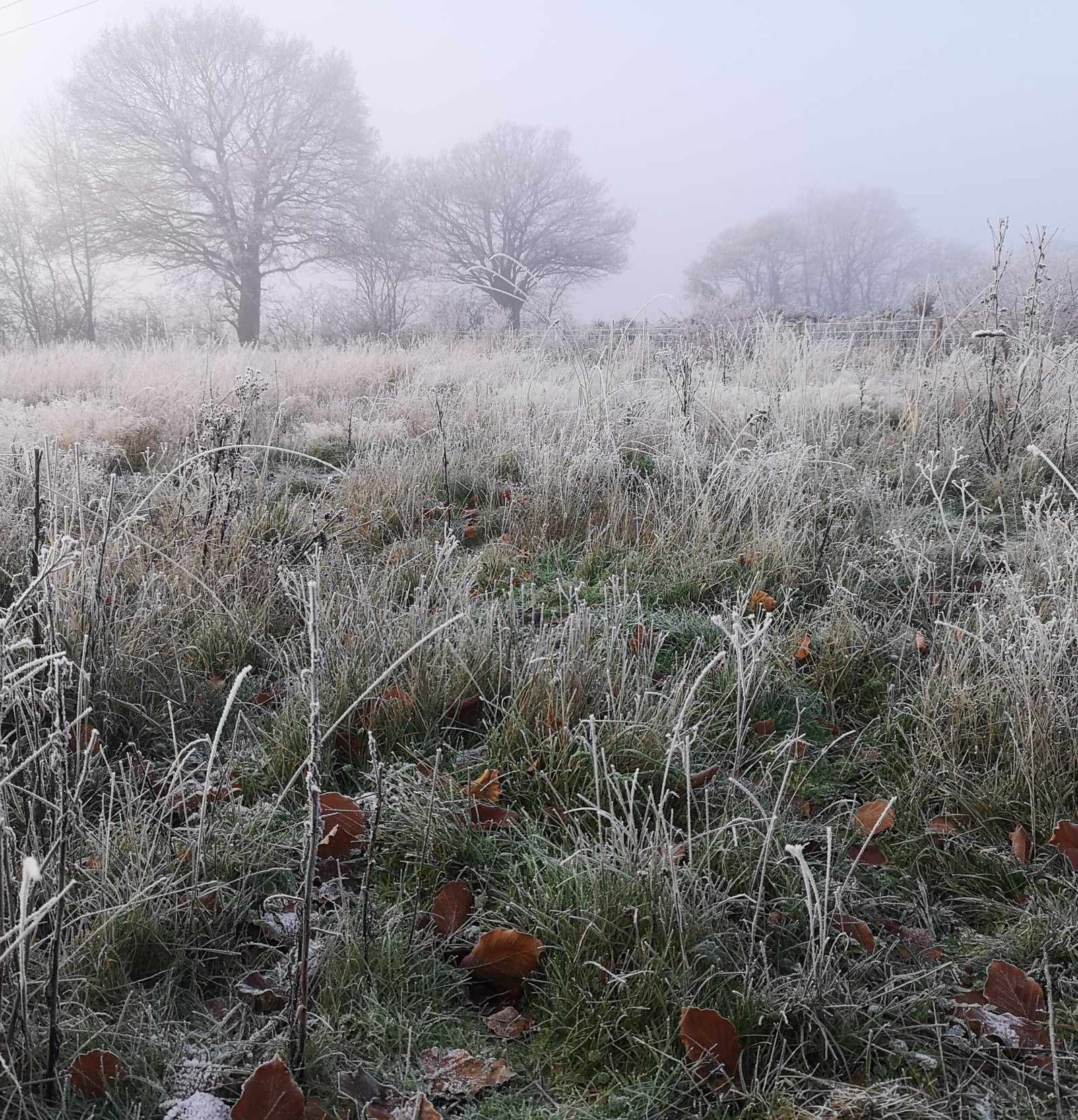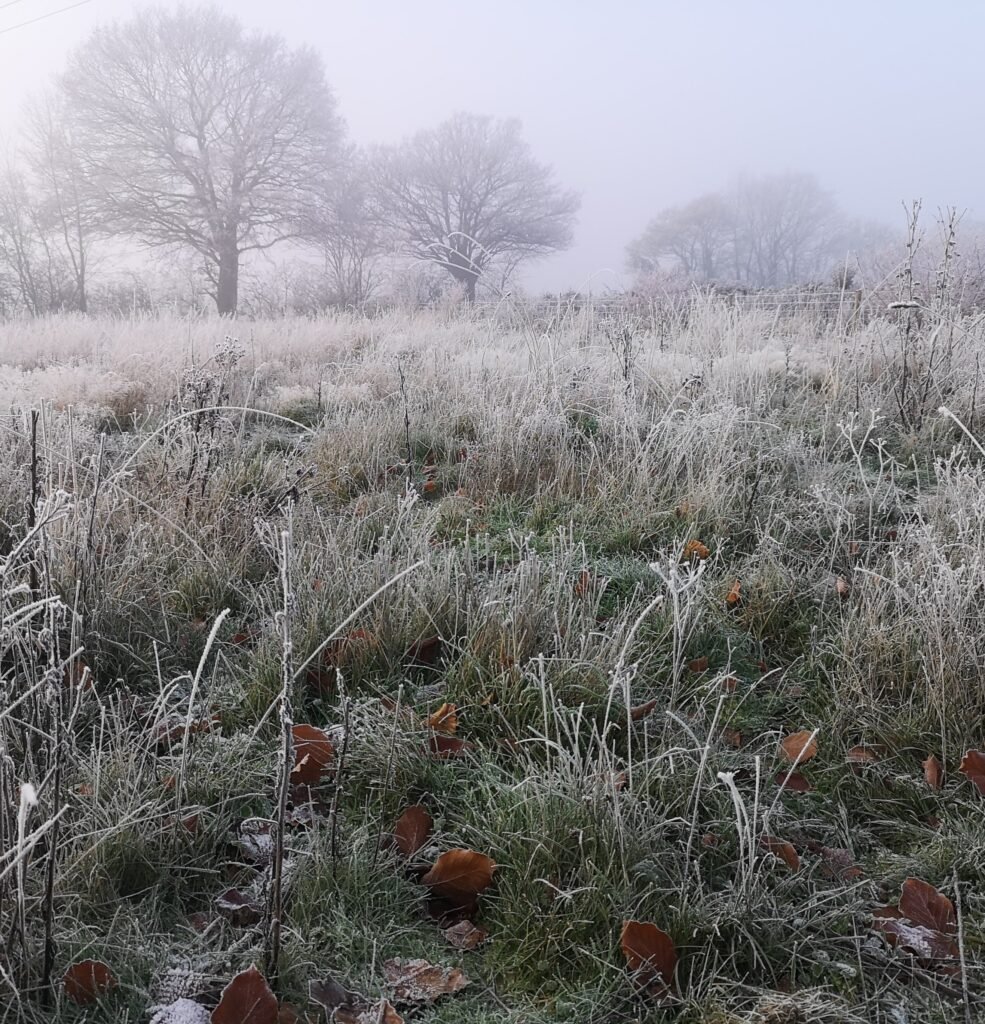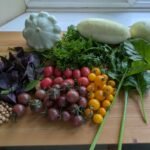On those cold nights in early autumn when we are heading towards the first frosts, or in those frosty or cold nights in early spring, you can protect your plants from the cold in a few different ways. You can plant them in a greenhouse or polytunnel, cover them with a coldframe or fleece, or plant/bring them inside. I’m going to go through all of these methods here, and will refer back to these in the plant specific posts.
Greenhouses
A transparent glass or plastic enclosed structure. They can protect plants from frost as well as pests. You can open windows for airflow and to let pollinators in. You can have beds in there for growing plants in their final position, or you can place pots/trays of seedlings or fully grown plants in them. You’ll need to manually water any plants that are in a greenhouse, unless you have an irrigation system set up. If you have a heated greenhouse you can grow things year-round, but if not then some plants won’t survive.
Polytunnels
A tunnel that is covered with translucent polyethelene, usually with a steel or plastic structure. They work in the same way as a greenhouse, but can be moved and are usually much cheaper. They heat up to make them warmer than the outside air and can protect from frosts, as well as many pests. Place it in the garden to cover plants that are in their final growing position or use it to protect potted plants and seedlings. Open vents and windows for airflow and to let pollinators in. You’ll need to manually water any plants that are in a polytunnel.
Coldframes
They are like a box that is either fully transparent or has a transparent lid. It’s placed over your plants, or plants in pots are placed in them. They protect plants from frost, and are especially useful for protecting plants from a one-off frost, or for getting a headstart on a small number of plants. They also offer protection from some pests. Open the lid during warmer days so that the plants don’t overheat. Plants will need to be manually watered.
Fleece
A lightweight, porous fabric that is wrapped around or covering plants, protecting them from frosts and many pests. Used to cover plants in pots or plants in the ground. Plants inside a fleece can sweat during the day in mild weather, as well as getting damp during the night, so it’s a good idea to open up or remove the fleece during the day to prevent rotting. These plants won’t need to be manually watered, unless you go through a dry spell. If you are using fleece for seedlings, then make a frame and cover the area with fleece.
Inside
Plant seeds in trays or pots inside, or grow potted plants inside. Plants inside are protected from almost all pests. South facing windows provide the best natural light, but this isn’t always enough, so you can use grow lights to provide plants with enough light to be healthy. Plants will need to be manually watered.
Spring
Greenhouses and Polytunnels
Plant seeds in trays or pots within the structure, or plant into their final growing position in beds in the greenhouse or the ground in a polytunnel. They should get warm during the day and will protect from frosts at night, allowing you to get a few weeks headstart on planting. At this time of year, provided the structure isn’t placed in the shade, plants should get enough light without the need for growlights.
Coldframes
Plant seeds in trays or pots inside a coldframe, or place the coldframe over plants that are in the ground. This should protect plants from frosts and most pests, while being warmer during the day. This can also give plants a few weeks headstart or protect them from one-off frosts early in the growing season.
Fleece
Not used as often for fully grown plants in spring. Wrap fleece around a frame and place over seedlings in their growing position or place pots inside to protect them from frosts.
Inside
Plant seeds in trays or pots, or grow plants in pots inside. Having them inside will protect them from frosts, and can get warm, depending on the temperature of your home.
Autumn and Winter
Greenhouses and Polytunnels
Plants can be moved into the structures, offering protection from frosts and pests. Or planted in a bed or ground within the structure at the start of the season.
Coldframes
Place the coldframe over plants that are in the ground, or place plants that are in pots inside the coldframe. This should protect plants from frosts and most pests, while being warmer during the day.
Fleece
Cover or wrap the fleece around plants to protect them from frosts and allow them to survive longer.
Inside
Move potted plants inside to protect them from frosts. Grow lights are beneficial here if you are continuing to grow the plants, due to the lower light levels at this time of year. They may not be needed if you use a conservatory or south facing window if you are just overwintering a plant though.

I am proud to be affiliated with JustSeed, a company that I have bought seeds from for a few years now. I believe in what they are doing over there, and if you are going to buy seeds, garden tools, or seedlings, then please consider checking them out and using my link below to do so. Thank you for supporting me.






Leave a Reply